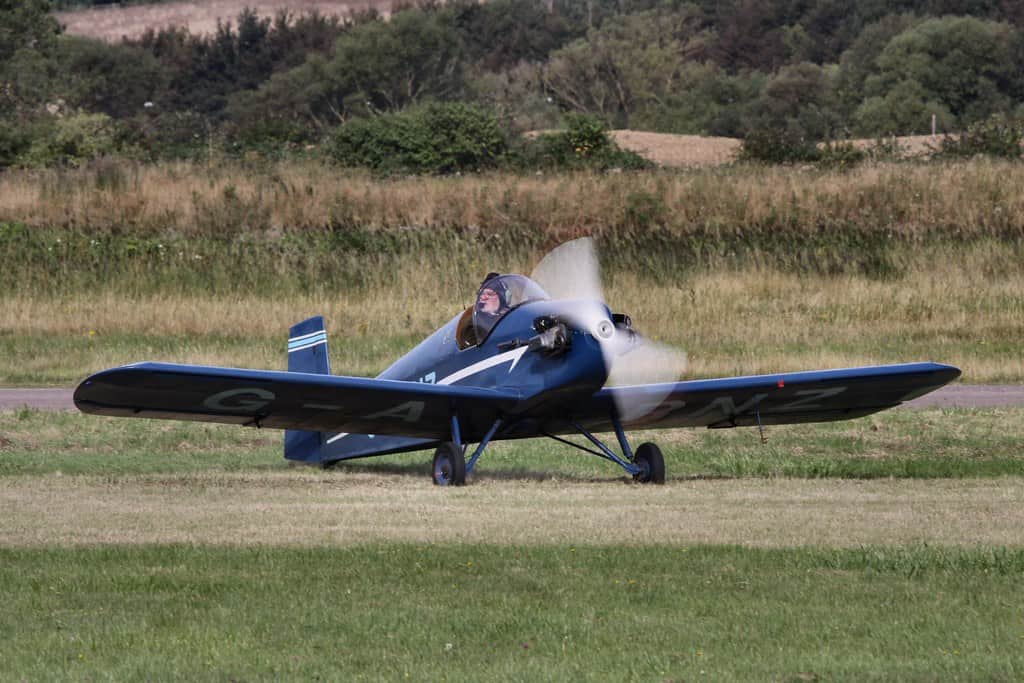Loss of Engine Power Results in Forced Landing of Druine D.31 Turbulent

When approaching the airfield on October 18, 2020, to rejoin the circuit, the engine of a Druine D.31 Turbulent began to run rough then completely lost power.
During the subsequent forced landing, the Druine aircraft came to rest inverted, and the pilot sustained minor injuries. A post-accident inspection of the engine revealed a crack on the plastic rocker arm in the fuel pump.
After the accident, the LAA (Local Airport Advisory) issued an Airworthiness Information Leaflet which requires plastic rocker arms to be replaced with metal rocker arms in affected aircraft.
History of the Druine flight
The aircraft took off from Damyns Hall Aerodrome Runway 03 at 1250 hours. The pilot reported sufficient fuel on board and that the aircraft was within its weight and balance limits. After flying locally for approximately one hr, 20 minutes, the aircraft approached Damyns Hall from the south-east. The pilot intended to join overhead for a right-hand circuit to Runway 03 and land. The pilot had the airfield in sight at an altitude of 1,100 feet when the engine began to run rough, and declared a MAYDAY, citing a partial engine failure, following which the engine failed completely.
The pilot of the Druine aircraft visually identified an area with fields and a golf course ahead, aimed the nose toward it and prepared for a forced landing.
The pilot recalled from training “to go under 50 kt. can be dangerous” and reported maintaining 55-60 kt. The pilot further stated that due to the short wings, the Turbulent has a relatively poor glide capability and therefore assessed the golf course was too far. The pilot decided to aim for a nearer field which initially appeared relatively level and smooth. As the aircraft descended,
the field began to look boggy with overgrown vegetation. The aircraft touched down approximately 1.3 nm. from the airfield at 1425 hrs. It “flipped over” to the left and came to rest inverted. The pilot released the harness, switched the magnetos and electrics off and vacated the aircraft. There was no fire.
The pilot was airlifted from the accident site 30 minutes later having suffered only minor cuts and bruises. The aircraft sustained damage.
Source: Air Accidents Investigation Branch (AAIB), “AAIB investigation to Druine D.31 Turbulent, G-ARNZ,” AAIB Bulletin, July 2, 2021.
Read the conclusion and the safety actions resulting from the Druine D.31 Turbulent, G-ARNZ here.
The Equifactor® Equipment Troubleshooting investigation process saves you time, steps, money, and frustration, and allows you to resolve the issue(s) with finality.
Contact us at info@TapRooT.com for information or visit our website to learn more and register for an Equifactor® course.
It is estimated that about 90% of equipment failures have a human error root cause. Ken gives us a great example in this TapRooT® TV. Also, follow up by reading Mark Paradies’ article about equipment failure and root cause analysis.
Sharpen your equipment troubleshooting skills.
Learn about Equifactor® Troubleshooting. Register your team for an Equifactor® course today — or contact us to discuss training your employees on-site. You may also call 865.539.2139 about having a course at your site or for further root cause analysis training opportunities. We’re here to find solutions for you.



